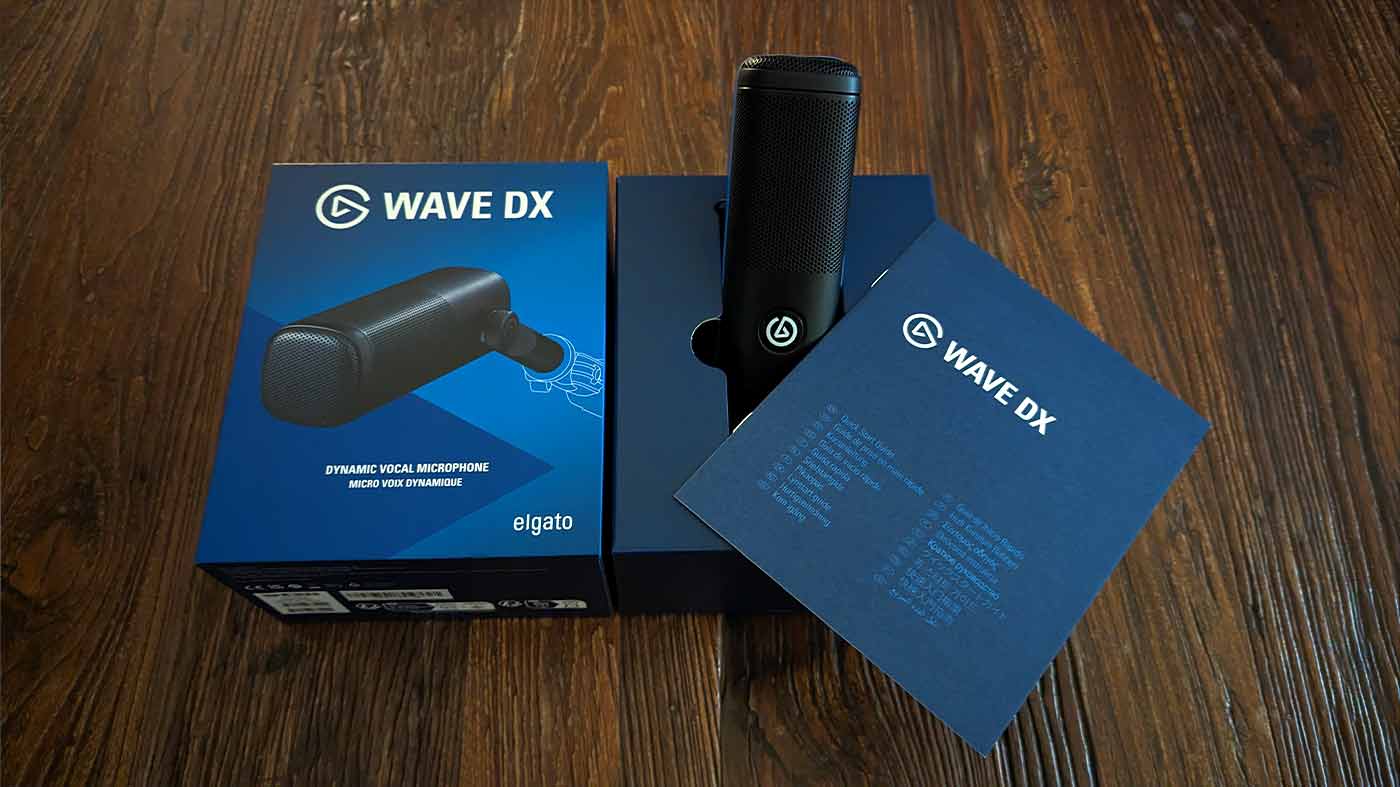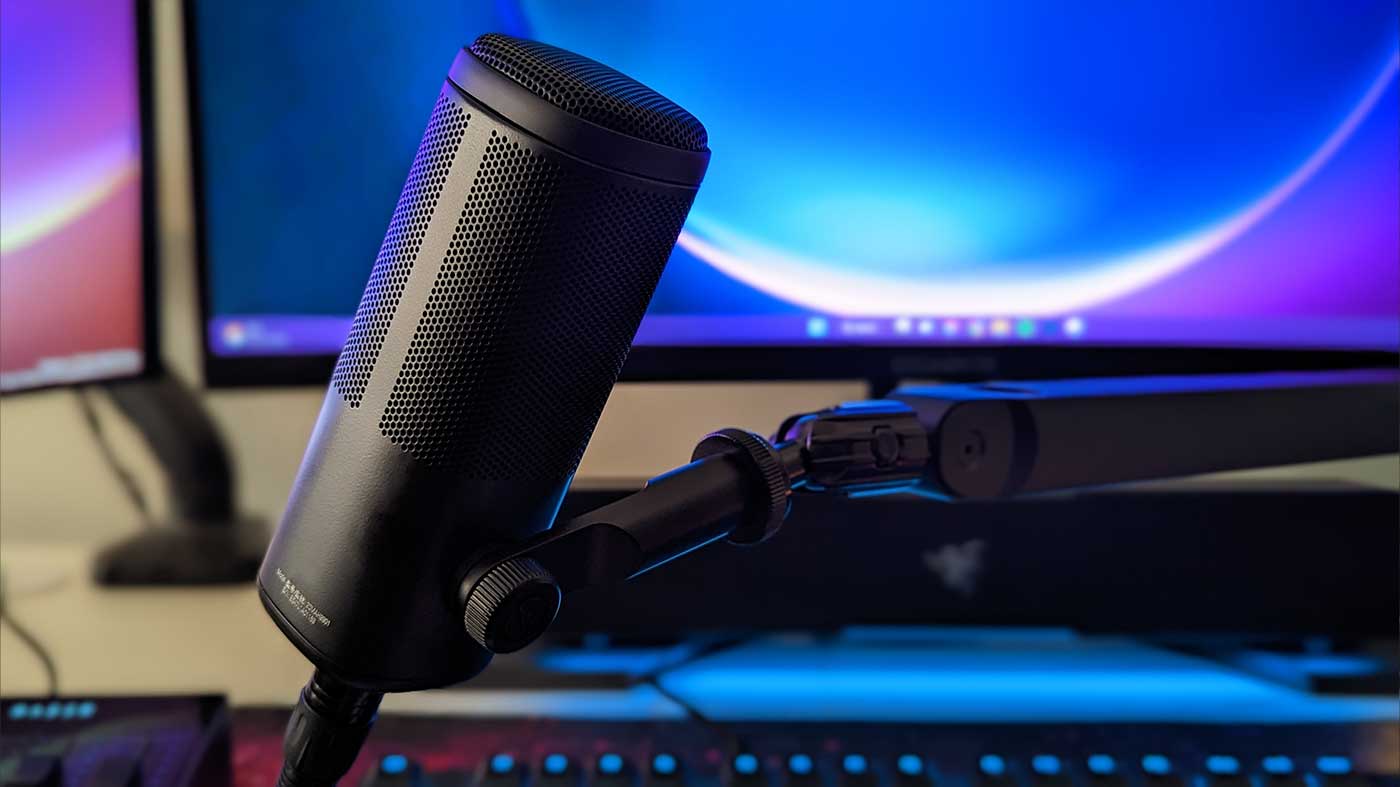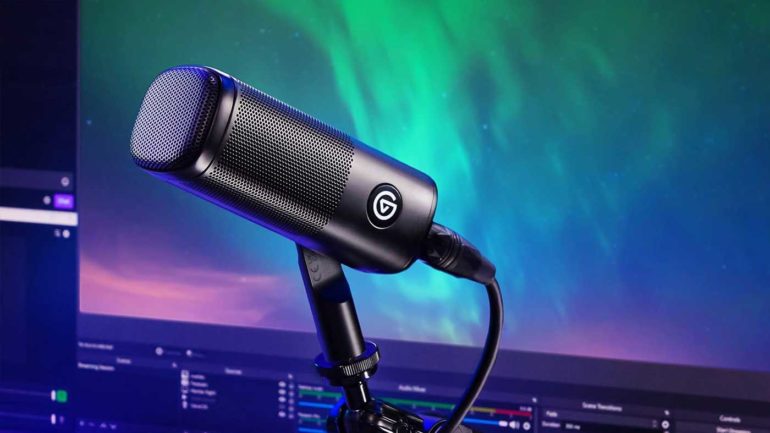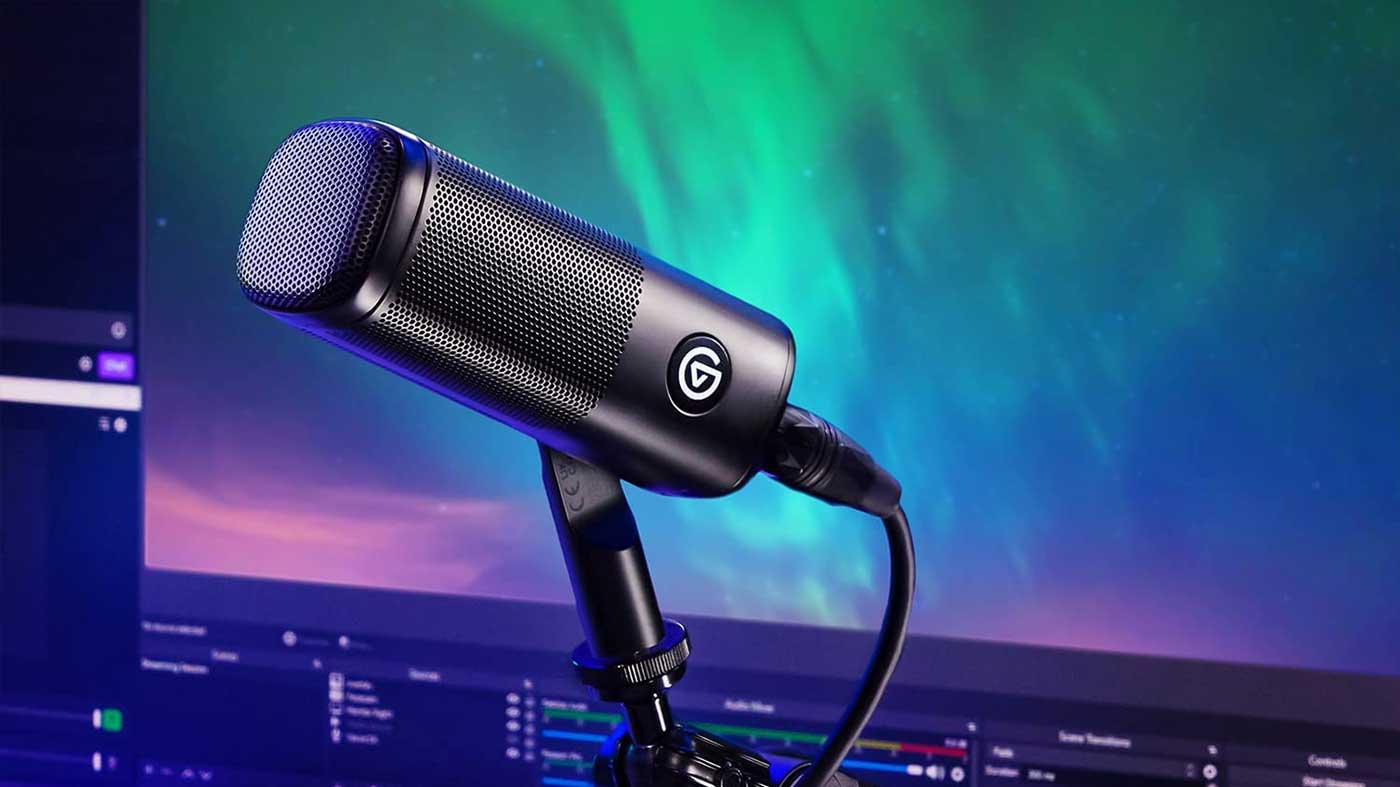I’ve gone through a few different streaming/podcast-focussed desktop microphones in recent years, like the original HyperX QuadCast and most recently the Elgato Wave:3, but since getting a dedicated audio mixer for my desk I’ve been keen to step away from USB-based condenser microphones to a dynamic solution that runs through XLR.
Enter: The Elgato Wave DX.
Unboxing this new microphone, Elgato’s first XLR-based and dynamic solution, was definitely in stark contrast to when I first opened up my Wave:3. It’s a comparatively humble offering – the simplistic and cylindrical block of the microphone itself, devoid of any buttons or dials, and the lack of any cables or a stand serving as an early reminder that this isn’t a standalone device.
Rather, the Wave DX is designed to fit nicely into a complete audio setup with a dedicated interface and mounting solution (more on that in a bit), and its understated design speaks volumes to this. If it weren’t for the logo on the side, which you can actually remove in order to switch which direction you’re mounting the microphone from, you’d be hard pressed to guess its brand of origin at all. If a clean desk aesthetic is your thing, and it’s certainly becoming mine, this is an attractive little number.

I’ll admit I was hesitant to make the change from a condenser microphone to a dynamic one, particularly given I use my mic primarily for recording the Press Start podcast, as the generally accepted rule is that condenser mics have an edge when it comes to picking up more nuanced sound and from wider angles. Given that I only ever record right in front of my mic though, and using the excellent low-profile Elgato Wave arm, I was keen to see how the dynamic Wave DX helped with eliminating background noise and allowing me to get a little louder and more excitable without worrying about the sensitive pickup.
The extra durability and light weight are a boon as well, and Elgato has very thoughtfully designed the microphone’s internals to negate the need for any extra, external pop filter or shock mount.
The Cheapest Elgato Wave DX Price: $159 at Amazon.
The result of all this is that the audio picked up by the Wave DX sounds brilliant. Everything I’ve recorded with it so far has sounded crisp, clear and often surprisingly rich for what I was expecting from a dynamic pickup. There’s some serious magic coming from the dynamic capsule that Elgato has used here (in collaboration with Lewitt Audio) to produce sound that’s very comparable to what I expect from my more expensive condenser microphone.
It’s really a best-of-both-worlds scenario which is a surprising and exciting thing to discover, and means I’m easily happy to make this my permanent desktop mic going forward. Very particular users might still want to look into an added pop filter/shock mount of some kind as I did find the internal solution wasn’t quite as effective especially given the encouragement to speak very loudly and closely into it, but overall it’s performed well above my expectations.
Another motivator for my trying out an XLR-based microphone solution has been the increased flexibility when it comes to my hardware and software setup. There’s definitely a case to be made for the convenience of a USB microphone like the Wave:3 with all of its onboard controls and plug-and-play nature, but the simplicity and connectivity of the Wave DX means it’s a lot easier to fit into a more complex configuration.
While Elgato obviously sells its own XLR interface (aptly name the Elgato Wave XLR) and offers an excellent audio software suite, I’m currently using a Razer Audio Mixer – a device that I love but haven’t been able to use to its full potential with a USB microphone. With the Wave DX, I was able to just plug straight into my mixer via XLR and immediately start using it and customising the sound through Razer’s mixing software.

Therein lies the crux of it though – if you’re considering a Wave DX, or any XLR mic, you’re gonna need some extra bits and pieces. Chances are if you’re specifically looking for an XLR mic it’s because you already have something going on but if you’re jumping in fresh then expect to spend a lot more than the $169 asking price for the Wave DX itself. You’re going to need some kind of interface, first and foremost, to plug the thing into and control it.
Again, Elgato sells its own solution with the Wave XLR which goes for $239, already costing more than the microphone itself but cheaper solutions exist and this mic doesn’t require any phantom power. You’ll also need to buy an XLR cable as there isn’t one provided, nor is there any kind of stand so you’ll also have to source a stand or arm of some kind. I attached mine to the same low-profile Elgato Wave Arm that I was using with my previous microphone, but like the interface you can absolutely source something cheaper.
What this means in all is that the Elgato Wave DX is an incredibly capable microphone with fantastic audio and an attractive design that, on its own, is also quite affordable. It’s the bits around it that’ll truly determine if this is the solution for you.
If you’ve got an XLR-ready setup or you’re keen to use a dedicated hardware interface/mixer and have the extras factored into your budget, I’d happily recommend the Wave DX as a worthy bit of gear, but if you’re just starting out in streaming or podcasting or desk space is at a premium then an all-inclusive solution like the similarly-excellent Wave:3 might be the way to go.




